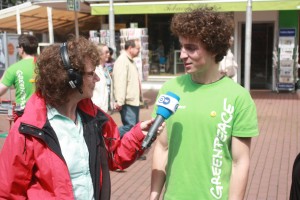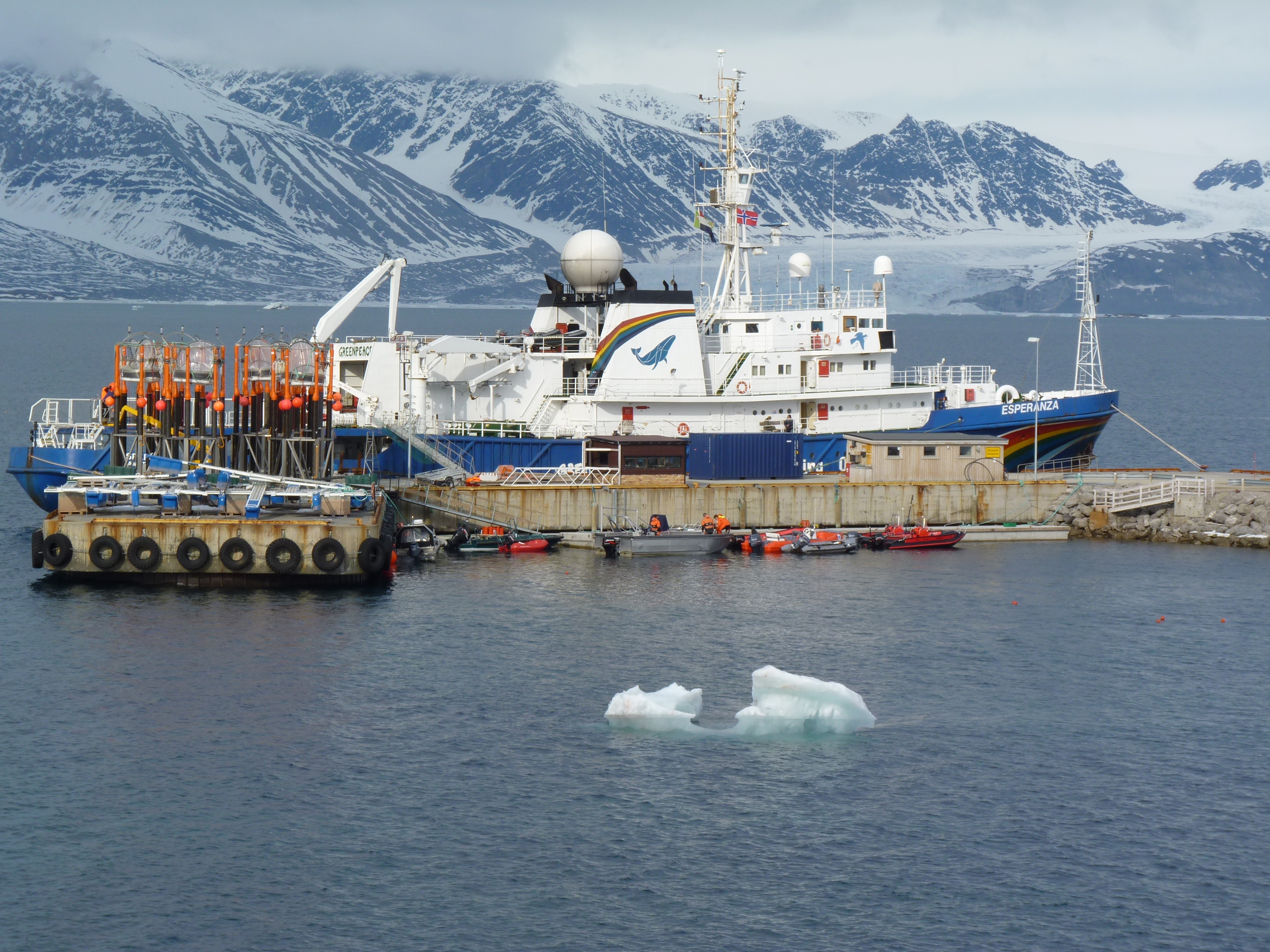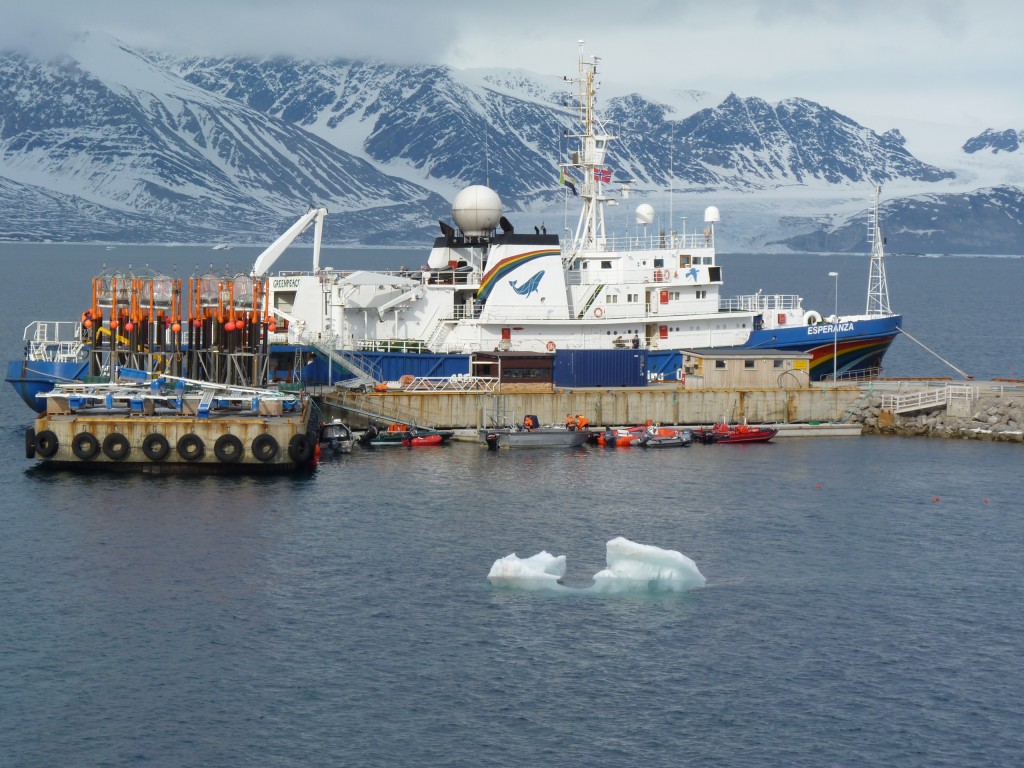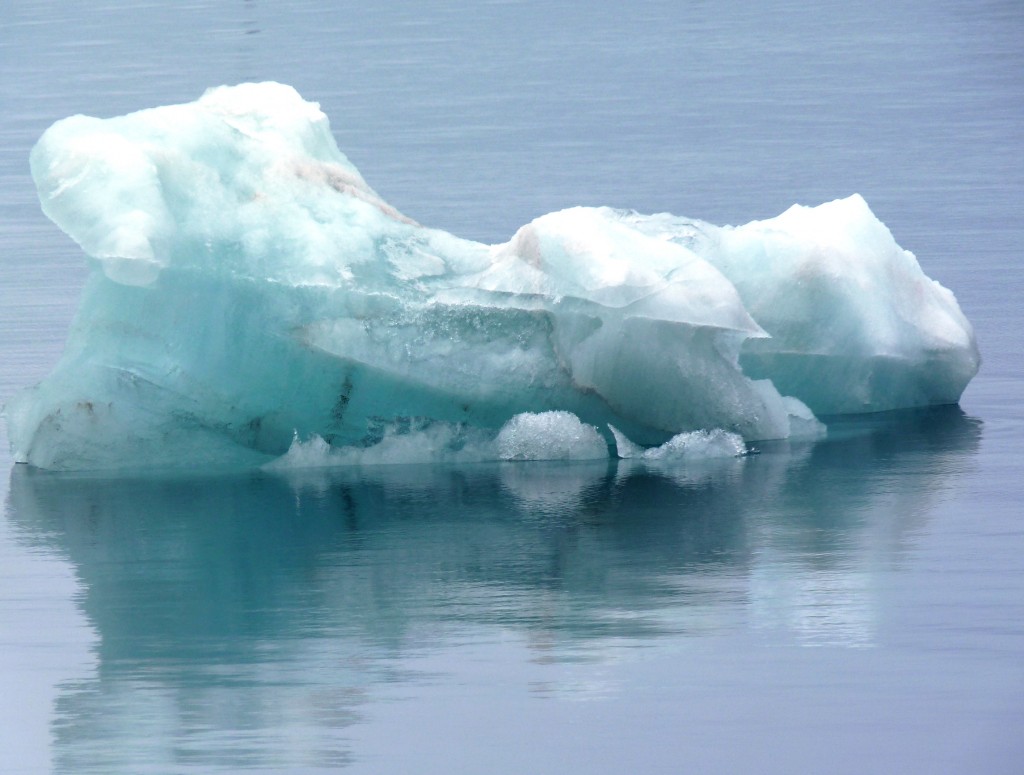Arctic Ocean acidification – kids’ stuff?
June 8th is World Oceans Day, so I am taking the opportunity to draw attention to the increasing acidification of the Arctic Ocean. CO2 makes the seas more acidic when it is absorbed from the air. This process is faster in cold water, making the Arctic particularly susceptible to this climate change impact. A study published earlier this year by scientists from the Arctic Monitoring and Assessment Programme (AMAP), based on monitoring over the last three years shows that the Arctic Ocean is rapidly accumulating carbon dioxide, leading to increased ocean acidification. This is having an impact on the marine ecosystem. The probem is exacerbated by increasing flows of fresh water from rivers and melting land ice. Creatures like pteropods, or sea butterflies, are likely to be harmed. Any marine life that needs calcium to form its skeleton or shell will be at risk, followed by the predators dependent on them.
My attention was drawn recently to a video cartoon produced back in 2009 aimed at teaching young people about ocean acidification, a concept which is not easy to grasp. I think it is great! Well done kids!
The animation was produced by pupils from Ridgeway School (Plymouth, UK) and Plymouth Marine Laboratory with funding from EPOCA the European Project on Ocean Acidification (www.epoca-project.eu). I recommend a look. Adults can learn something from it as well as kids! It is a great way to explain the concept, an entertaining video, and the idea of teaching young people about the problems our lifestyles are causing is a key element in securing a sustainable future. I recently acquired a copy of a book in German with a similar aim: Tessi & Tipo. Die Entdeckung der Ozeanversauerung. (ISBN 978-3-86918-204-9)It was written by Antje Funcke and Konstantin Mewes, young scientists at AWI, the Alfred—Wegener-Institut, Germany’s polar science body. Nice work!
The Oslo-based “Center for International Climate and Environmental Research” has a good summary of the AMAP report on its website. I reported on an EPOCA experiment to measure ocean acidification in the Arctic off Spitzbergen in 2010. Greenpeace had helped the scientists by offering the Esperanza to transport the “mesocosms” for the experiments up north. The story is online here: Scientists enter unusual alliance to study Arctic Ocean.
10 years French-German Arctic Station
Congratulations to the team of the joint French-German Arctic research station in Ny Alesund, Svalbard. It is ten years since the German polar authority AWI (Alfred-Wegener Institute for Polar and Marine Research) and its French counterpart IPEV (Institut Polaire Paul Emile Victor) joined forces at the world’s northernmost research base.
The station was my first Arctic destination in 2007, so it has a special significance for me. During the IPY, I was involved in an international radio cooperation to report on polar science, which was how the Ice Blog was born.
Photo gallery from Ny Alesund, “From Pole to Pole”.
AWIPEV is the biggest of the research stations in Ny Alesund, and takes up to 150 scientists from France and Germany in the course of a year.
I visited again in 2010 with a team looking at ocean acidification. Their equipment was transported up by the Greenpeace ship Esperanza, a “first” in terms of cooperation between scientists funded by the EU’s EPOCA programme and the environment group. Greenpeace offered the ship to help out when none of the scientific research vessels was available for the project.
The station has also just been the first to be officially approved by the climate data network GRUAN. Not a terribly attractive acronym, but definitely easier to say/write than the whole title: Global Climate Observing System Reference Upper Air Network. Basically, the idea is to standardize and the measurement of climate parameters around the world so that the figures are really comparable. It was initiated by the World Meteorological Organization, the Intergovernmental Oceanographic Commission, UNESCO, UNEP and the International Council for Science.
Keep up the good work everyone up there at AWIPEV.
“Penguins” ask Berlin to save Antarctic
Today, it seems, is World Penguin Day. If you happened to be in the German capital, Berlin, this would have been drawn to your attention by largish “penguins” visiting the embassies of Russia, China and Norway, as well as the German Agriculture Ministry, which, it may surprise you to know, is responsible for the protection of the Antarctic on behalf of the German government
Activists from “The Antarctic Ocean Alliance“, (AOA) made use of the occasion to draw attention to the need to protect the pristine ice region at the south of the world. The background is that Germany will be host to a meeting of the Commission for the Conservation of Antarctic Marine Living Resources (CCALMR) in July this year. The meeting, in Bremerhaven, home of Germany’s Alfred Wegener Institute for polar and marine research, will be discussing the possible creation of two Marine Protected areas (MPAs) in the Antarctic. The alliance, made up of WWF, Greenpeace, Deepwave, Whale and Dolphin Conservation (WDC) and others, is calling on Germany to play a leading role and on other key countries to support a decision in favour of the protected areas.
Steve Campbell, Campaign Director of the AOA, stressed Germany’s long tradition of scientific polar research and the key role the country could play in Antarctic protection. The alliance stresses that the Southern ocean is under increasing pressure from climate change and resource depletion. The areas the AOA want protected now are described by the campaigners as one of the world’s last wildernesses and an essential “living laboratory” for the planet.
Shell puts Arctic drilling on hold
Shell has said it will not drill for oil in the Alaskan Arctic this year. The announcement was not surprising, as the company is facing official US investigations after a series of problems, culminating in the grounding of the Kulluk drilling ship in a storm late last year. The company announced earlier this month that its two Arctic offshore rigs would be going to Asia for repairs and upgrades. Critics say oil drilling in Arctic regions is too risky and there is not sufficient capacity to cope with an oil accident in the remote region with its extreme weather conditions and fragile ecosystem.
Environment campaigners welcomed the announcement. Reuters quotes Michael LeVine from Oceana in Juneau, Alaska, as saying both Shell and the government agencies regulating the company faced a “crisis of confidence”. He says the decisions to allow Shell to operate in the Arctic Ocean were premature. Phil Radford, Executive Director of Greenpeace USA issued a statement saying:
“Shell was supposed to be the best of the best, but the long list of mishaps and near-disasters is a clear indication even the ‘best’ companies can’t succeed in Arctic drilling. Secretary Salazar and President Obama gave drilling a chance; now the responsible decision is to make Arctic drilling off limits, forever.” Shell has collected more than 2.7 million signatures for their “Save the Arctic” campaign.

I interviewed Greenpeace “Save the Arctic” campaigners including Lukas as they collected signatures in Bonn, Germany, last year.
However, the announcement does not mark the end of Arctic drilling plans. ConocoPhillips reaffirmed on Wednesday that it would continue with its own plans to drill one or two exploration wells in the Chukchi Sea in 2014, and expected to submit more information on it to the federal regulator by the end of March. Marvin Odum, director of Shell Upstream Americas, stressed this was only a temporary break in his group’s Arctic activity: “Our decision to pause in 2013 will give us time to ensure the readiness of all our equipment and people.”
Business opportunities boom in the Arctic
UNEP concerned about Arctic melt
The UN Environment Programme (UNEP) has issued a warning that last year’s record shrinkage of the Arctic sea ice highlights the risks climate change brings for the planet. The annual review of the state of the world’s environment was presented in Nairobi this week during an ongoing high-level ministerial meeting.
UNEP said the summer sea ice in the Arctic had covered a record low area of 3.4 million square kilometers, 18 percent below the previous recorded minimum in 2007 and 50 percent below the average for the 19802 and 1990s. The report also mentions melting land ice in Greenland and melting permafrost in high latitudes. The figures are not new, but it is significant that UNEP should highlight the Arctic and the fact that no action is being taken in reaction to the evidence which clearly shows climate-change-induced melting.
“Changing environmental conditions in the Arctic, often considered a bellwether for global climate change, have been an issue of concern for some time, but as of yet this awareness has not translated into urgent action”, UNEP Executive Director Achim Steiner said presenting the report on Monday. He warned that the rush to extract oil and gas from the Arctic seabed as the ice retreats could lead to even higher emissions of greenhouse gases.
“What we are seeing is that the melting of ice is prompting a rush for exactly the fossil-fuel resources that fuelled the melt in the first place”, said Steiner.
Now this is a sentiment Greenpeace, WWF Arctic and other groups have been expressing for years. Here we have it from the world’s key environment watchdog.
“The rush to exploit these vast untapped reserves has consequences that must be carefully thought through by countries everywhere, given the global impacts and issues at stake”.
Meanwhile, this week, Russian President Vladimir Putin signed the country’s “strategic program on Arctic development up to 2020. Enough said?
For anyone who wants to catch up on the Arctic development story, here are a few links.
Polar ice sheets melting faster than ever
Business opportunities boom in the Arctic
Sea levels rising faster than expected
China’s Arctic ambitions spark concern
Energy giants cooperate for Arctic resources


























Feedback